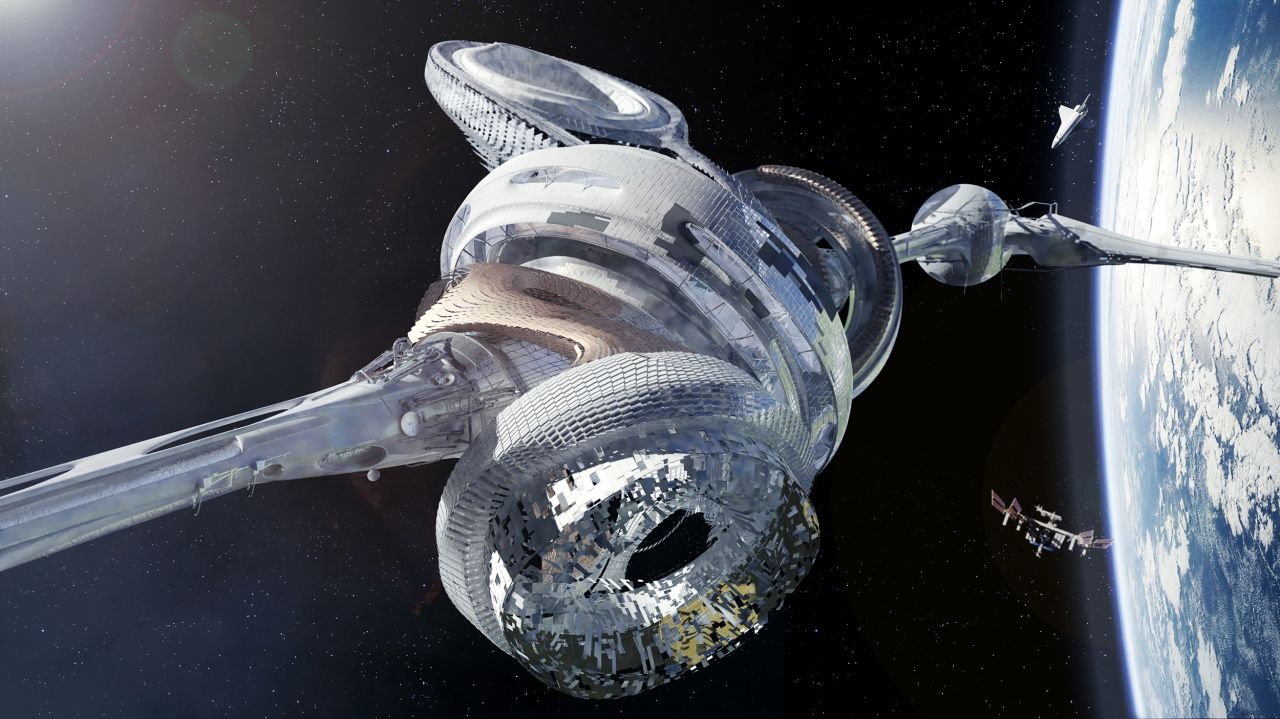Space came to Earth
Following a lengthy analysis of the first orbital city project, my team and I decided to change the visuals while adhering to the overall concept of a new society. The Ether 2.0 concept became more futuristic, designed by the architect Luis Daniel Pozo Torres. The city acquired an asymmetrical shape, it became more complex and more functional at the same time. We kept the multi-tiered construction, but added a weightlessness zone and a power station.
Ether 3.0 is the 2020 project. It is the result of detailed elaborations of the orbital city’s numerous iterations. Its shape is now fundamentally different: it’s now a multi-modular complex. Each hermetically-sealed residential module creates its own artificial gravity so people can move around comfortably. This orbital city became more of a center for future research of outer space than housing for space immigrants. The city is a place where scientists can do research and develop new technologies beyond the confines of our planet.
All three of these projects are unique and promising in their own way. What unites them is their mission to serve as a springboard for humanity’s leap. More than ever, this is the time to come together around the humanistic idea of advancing and saving humankind and the planet.
We need a platform where we can grow our consciousness without the threat of armed conflicts, environmental disasters, or pandemics.
We need security and the possibility to improve ourselves.
We need a material actualization of the Human Cosmos philosophy.
That’s why I started to think about creating such a place here on Earth.. And came up with the idea to build Cosmos Center.


